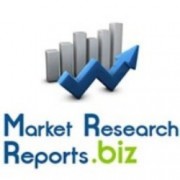
MarketResearchReports.Biz has announced addition of new report "Breast Cancer Therapeutics In Major Developed Markets To 2021 - Growth Driven By Rapid Uptake Of Premium Priced Biologics And Rising Incidence" to its database.
Albany, January 28, 2016 (Newswire.com) - Breast cancer, a malignant neoplasm, is the second most common cancer and the most common cancer in women worldwide, accounting for 16% of all female cancers, making the disease exceedingly prevalent. The number of women diagnosed with breast cancer has increased over the past few decades, but the number of deaths has declined due to earlier diagnosis and better treatment options.
Breast cancer therapeutics treatment has been revolutionized in the past four decades, especially with increasing usage of targeted therapies. The marketed products landscape comprises a wide range of treatment options, including hormonal therapies, chemotherapies, combination therapies, and targeted therapies. Nevertheless, significant unmet need remains for products that can improve overall survival rate, time to disease progression, and overall response.
Scope
The current breast cancer market contains novel products, including Perjeta, a targeted therapy; Kadcyla, a human antibody-drug conjugate; and Halaven, a novel chemotherapeutic agent.
What are the competitive advantages of the existing novel drugs?
With over 700 active pipeline molecules, most of the investigational drug candidates are being evaluated for the first-line or second-line treatment of advanced-stage breast cancer, featuring new combination therapies, targeted therapies, and promising immunotherapies, as well as chemotherapy drug candidates.
Which classes of novel drugs are most prominent within the pipeline?
Is there strong potential for the pipeline to address unmet needs within the breast cancer market?
Analysis of clinical trials since 2006 identified that the failure rates of breast cancer molecules were highest in Phase II (41%), with the overall attrition rate for breast cancer in development being 61%.
How do failure rates vary by product stage of development, molecule type, and mechanism of action?
How do other factors, such as average trial duration and trial size influence the costs and risks associated with product development?
Over the 2014–2021 forecast period, the breast cancer therapeutics market in the eight major markets is expected to increase in value at a CAGR of 7.3%, from $10.4 billion to over $17.2 billion.
Which markets make the most significant contribution to the current market size?
What are the epidemiology trends in these markets?
Will new market entrants lead to substantial changes in annual therapy costs?
How will different treatment usage patterns impact growth in the eight major markets?
Rising breast cancer incidence and new product approvals will lead to significant market growth over the forecast period, despite generic sales erosion resulting from patent expirations.
Will patent expirations or emerging pipeline molecules threaten the commercial success of existing drugs?
Which patent expirations will have the most significant impact on the market?
Download Detail Report With Complete TOC at: http://www.marketresearchreports.biz/sample/sample/536328
Reasons to buy
This report will enable you to -
Understand the clinical context of breast cancer by considering symptoms, etiology, pathophysiology, epidemiology, diagnosis, and treatment options. Identify the therapeutic strategies, products, and companies that dominate the current marketed products landscape and recognize gaps and areas of unmet need. Identify key pipeline trends in molecule type, administration route, mechanism of action, and novelty. Consider market opportunities and potential risks by examining trends in breast cancer clinical trial size, duration, and failure rate by stage of development, molecule type, and mechanism of action.
Recognize the late-stage pipeline molecules that have demonstrated strong therapeutic potential in breast cancer by examining clinical trial data and multi-scenario product forecast projections.
Compare treatment usage patterns, annual therapy costs, and market growth projections for the US, Canada, the UK, France, Germany, Italy, Spain, and Japan.
Discover trends in licensing and co-development deals concerning breast cancer products and identify the major strategic consolidations that have shaped the commercial landscape.
Share: